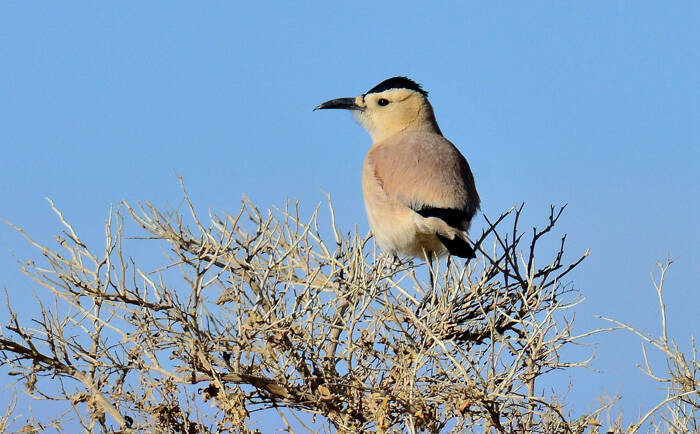Podoces hendersoni
IUCN
LCBasic Information
Scientific classification
- name:Podoces hendersoni
- Scientific Name:Podoces hendersoni,Mongolian Ground-jay
- Outline:Songbird
- Family:Passeriformes Songbirds Corvidae G.Corvus
Vital signs
- length:24-36cm
- Weight:90-128g
- lifetime:No verification information
Feature
The body feathers are sandy brown, and the forehead, top of the head and back of the neck are black with a metallic purple-blue sheen.
Distribution and Habitat
It is mainly distributed in China (Kashgar in western Xinjiang, Junggar Basin in the north, Hami in the east, Ruoshui in northwestern Gansu, Qaidam Basin in Qinghai, Helan Mountain in Ningxia, Alxa League and Ikh Zhao League in Inner Mongolia) and northwestern and southwestern Mongolia, and also wanders in Kazakhstan in Central Asia.
It is distributed at an altitude of 2000-3000 meters, mainly inhabiting arid foothill plains, deserts and semi-desert areas, especially in rocky deserts with sparse shrubs.
Appearance
The plumage of male and female black-tailed jays is similar, and the whole body is generally light sandy brown or gray rust. The forehead, top of the head and back of the neck are black with a purple-blue luster. The sides of the head are creamy yellow with white tips, and the lower back, shoulders, waist and upper tail coverts are grape brown. The small and middle coverts on the wings are sandy grape brown, and the large coverts are blue-black. The middle part of the primary flight feathers is white, the base and tip are black, forming a distinct white wing spot on the wing, and the inner flight feathers are black with a blue-purple metallic luster. The tail is black with a blue luster, and the outer tail feathers have narrow sandy feather edges. The chin and throat are creamy white or yellowish white, the chest, abdomen and flanks are creamy yellow or light yellow, and the anal and undertail coverts are sandy white. The bill is long, curved, black, and the feet are also black.
The
Details
The black-tailed ground jay is called Mongolian Ground-jay in foreign language, and has no subspecies.

The black-tailed ground jay is a resident bird. It mainly moves on the ground, moves agilely, runs fast, and rarely flies unless in an emergency. Each flight usually takes a few dozen to more than 100 meters before landing. It does not fly high, but flies close to the ground and likes to dig the soil. The well-developed nose feathers cover the nostrils tightly, which is obviously related to the strong wind and sand and the habit of digging the soil. The behavior is cautious and alert. It often moves alone or in pairs, rarely in groups, and mostly forages in the bushes.
The black-tailed ground crow mainly feeds on locusts, grasshoppers, coleopteran beetles, ants and other insects and insect larvae. It also eats lizards, small rodents, plant fruits and seeds, etc.
The breeding season of the black-tailed ground crow is April-May. The nest is built in the bushes or in the earth hole on the ground. The nest is woven from materials such as dead branches and roots, and is padded with soft materials such as hair. The nest is cup-shaped, with a diameter of 12-18 cm.
According to the Soviet Fauna, the nest of the black-tailed ground crow is built in the bush, 1 meter above the ground. The nest is very solid, similar to the nests of other crows. The outside of the nest is made of twigs and roots, and the inside is covered with camel hair. The inner diameter of the nest is 15-16 cm.
Listed in the "Red List of Endangered Species of the World Conservation Union" (IUCN) 2016 ver 3.1-Least Concern (LC).
Listed in the second level of China's "National Key Protected Wildlife List" (February 5, 2021).
Protect wild animals and stop eating game.
Maintaining ecological balance is everyone's responsibility!








